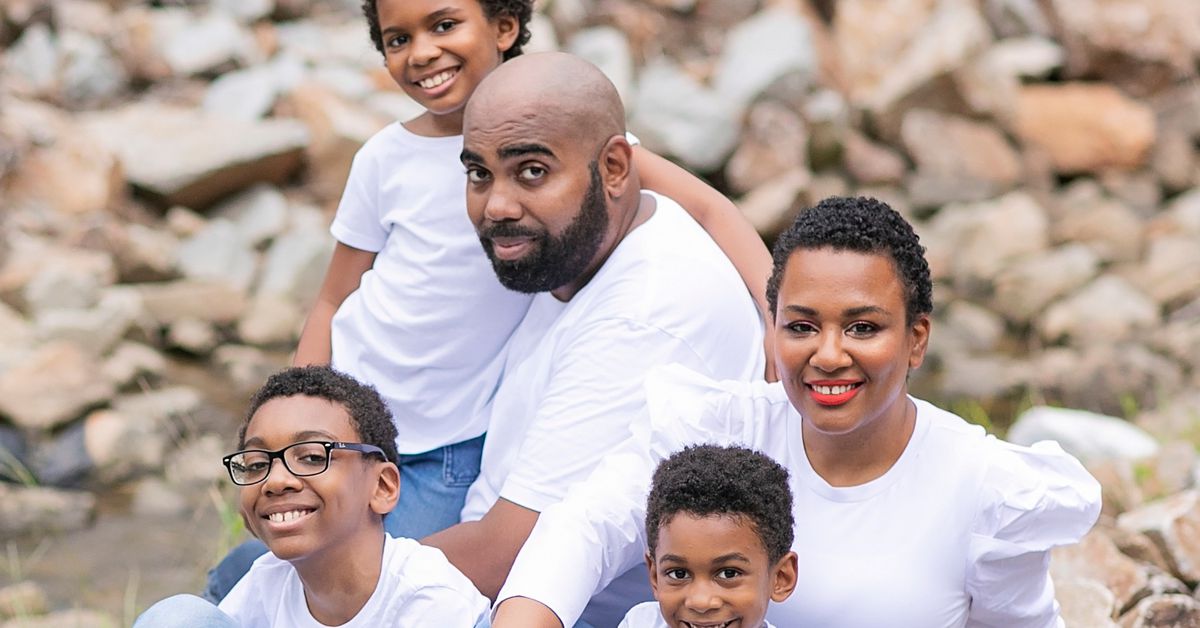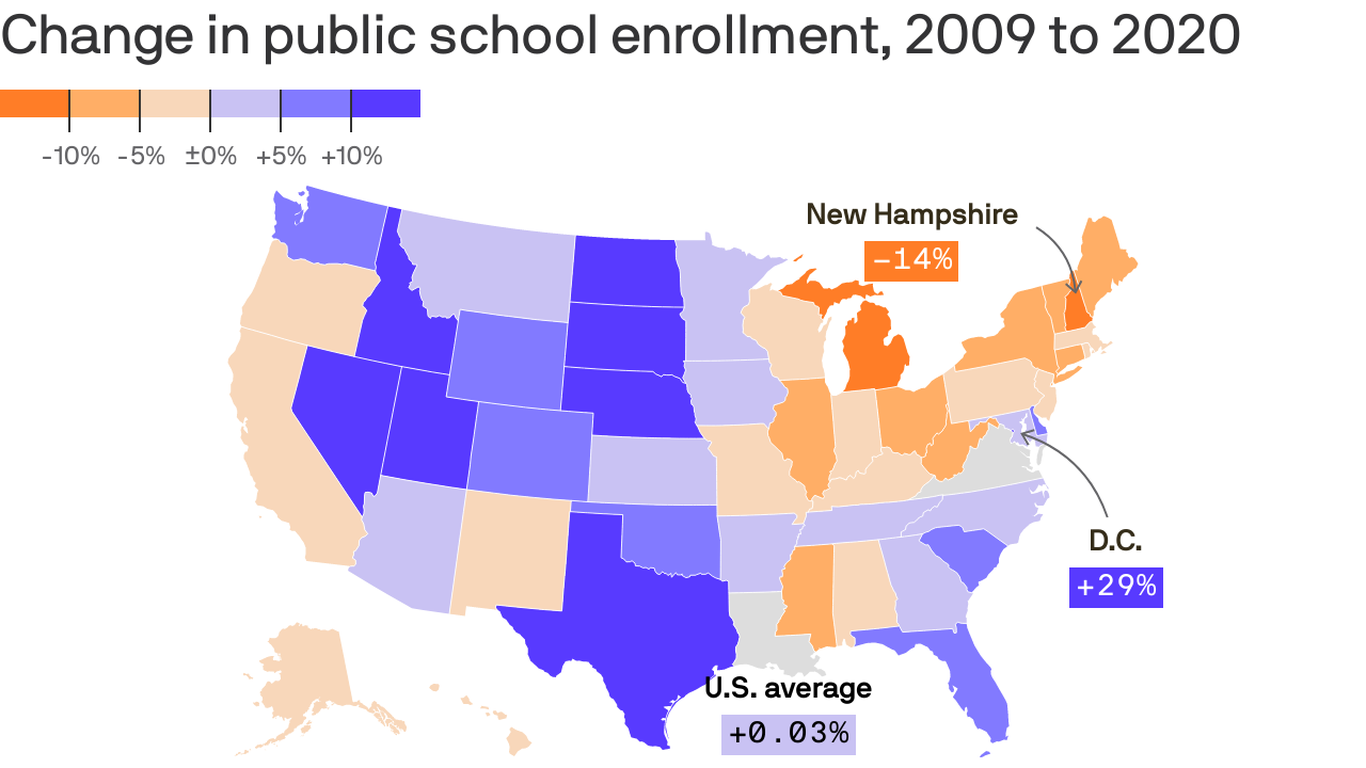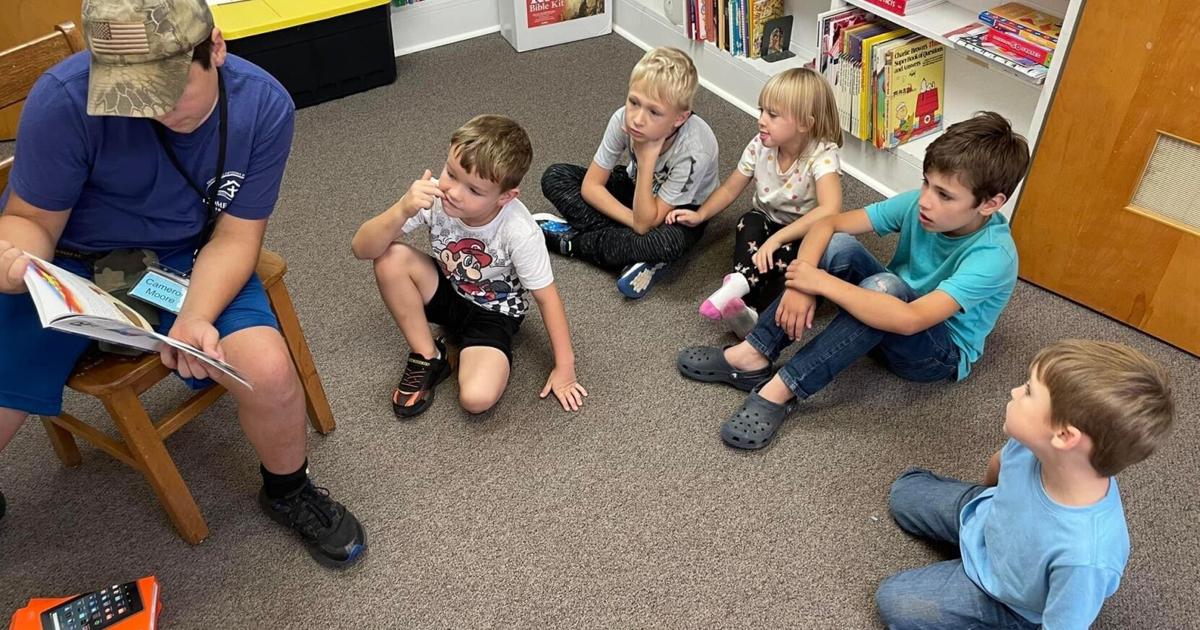Mirroring trends across the nation, the number of children being home-schooled has dramatically increased in New York City.
This school year, roughly 14,800 children across the five boroughs have opted to learn outside of school walls, according to internal education department data obtained by Chalkbeat. That number jumped by nearly 7,000 — or 88{e4f787673fbda589a16c4acddca5ba6fa1cbf0bc0eb53f36e5f8309f6ee846cf} — since the pandemic hit with the biggest gain occurring this school year, as more than 4,000 new students registered to home-school.
The largest increases were in districts with higher shares of low-income students, a Chalkbeat analysis found.
The reasons families decide to educate their children at home vary. For some parents, the pandemic may have pushed them out of the workforce or into remote jobs where they found themselves with the time and desire to educate their children after getting a taste of it during remote learning.
Some may have been unhappy with what they saw when their children were in online classes last year, and families of color, in particular, may have been upset witnessing firsthand curriculum that wasn’t culturally responsive. For others, it was a trust issue: They felt their children were safer at home because of COVID fears or other school-related violence.
Bushwick mom Shalonda Curtis-Hackett started out this school year keeping her three children home as a form of protest, striking along with other families who wanted a remote learning option in New York City amid the ongoing public health crisis.
On top of COVID, Curtis-Hackett has long been skeptical of her children’s public-school education, concerned about anti-Blackness and bias she saw in the teaching and curriculum. She officially notified the city’s education department in November of her plans to home-school her children.
Now, she’s deep in the process of “unschooling” her children, following their interests instead of a prescribed curriculum. She’s plugging into a growing movement of Black home-schoolers on Instagram, sharing tips and resources with other parents.
“Our kids are harmed in public school,” Curtis-Hackett said. “Because we’re unschooling, we play a lot of games. I let them play video games. We put together a puzzle globe, and we spin and pick a place to research.”
Yes, her fifth grader is playing a lot of Minecraft, Curtis-Hackett said, but she’s also reading more. Her second grader is playing a lot of board games, and he’s learning math in the process. Both of those children and her ninth grader have recently started learning instruments — one is doing piano, another is studying guitar, and the other is playing the flute.
Home-schooling is hard for many families to pull off, and it still remains relatively rare, accounting for roughly 1.5{e4f787673fbda589a16c4acddca5ba6fa1cbf0bc0eb53f36e5f8309f6ee846cf} of students, city education department officials said. But the increase may explain part of the enrollment decline among the city’s traditional public schools.
Students in grades K-5 moved into home schooling at the highest rates, jumping 119{e4f787673fbda589a16c4acddca5ba6fa1cbf0bc0eb53f36e5f8309f6ee846cf} on average since the 2019-2020 school year, a Chalkbeat analysis of the data since the 2019-20 school year found. Middle school saw a 74{e4f787673fbda589a16c4acddca5ba6fa1cbf0bc0eb53f36e5f8309f6ee846cf} increase in home-schoolers, while high school home-schoolers increased by 64{e4f787673fbda589a16c4acddca5ba6fa1cbf0bc0eb53f36e5f8309f6ee846cf}.
There is also evidence that low-income families may have opted to homeschool at higher rates. The number of home-schooled students in the six highest poverty districts increased about 119{e4f787673fbda589a16c4acddca5ba6fa1cbf0bc0eb53f36e5f8309f6ee846cf}, on average, while home-schooling students in the six lowest poverty districts increased about 79{e4f787673fbda589a16c4acddca5ba6fa1cbf0bc0eb53f36e5f8309f6ee846cf} over the past two years.
“The past two years have been challenging for school communities across the nation, and families made the best decisions suited to their unique needs and circumstances,” education department spokesperson Sarah Casasnovas said. “As New York City recovers from the impacts of the pandemic, families are returning to classrooms. Chancellor Banks is committed to engaging with families and working to restore trust in New York City schools.”
COVID-era home schooling
Home schooling has grown in popularity across the country during the pandemic. The number of Florida students enrolled in home education jumped by 35{e4f787673fbda589a16c4acddca5ba6fa1cbf0bc0eb53f36e5f8309f6ee846cf} in the year after the pandemic started. In Virginia, there was a 56{e4f787673fbda589a16c4acddca5ba6fa1cbf0bc0eb53f36e5f8309f6ee846cf} jump in home schooling, though the numbers fell somewhat this school year. And in Michigan, researchers found students left public schools for home-schooling arrangements at significantly higher rates when the pandemic hit.
There are no official national counts of families who home-school. A Census survey found that home school rates roughly doubled in the immediate aftermath of the pandemic, with an even more dramatic jump among Black families, though some analysts believe those figures are overstated.
The 88{e4f787673fbda589a16c4acddca5ba6fa1cbf0bc0eb53f36e5f8309f6ee846cf} increase in home schooling in New York City is consistent with large increases in other parts of the country, said Andrew Bacher-Hicks, an assistant professor at Boston University who has studied home-schooling trends during the pandemic. He noted that public school districts that offered in-person learning in the fall of 2020, such as New York City, tended to see larger increases in families choosing to home-school. Schools that did not offer in-person schooling tended to see more parents leave for private schools.
“The leave to home schooling might be related to health concerns,” Bacher-Hicks said. (New York City did not offer a virtual option this school year, which coincided with a larger increase in home schooling.) But “no matter what modality was offered, some subset of households and parents and families are going to be unhappy with the public offering.”
Bacher-Hicks added that Black and low-income families tended to opt for home schooling at higher rates. New York City education department officials declined repeated requests to share demographic data of home-schooled students and did not return a public records request for that information.
Historically, home schooling has generally been considered a “white phenomenon,” said James Dwyer, a professor at William and Mary Law School and co-author of “Homeschooling: The History and Philosophy of a Controversial Practice.”
In the 1960s, home schooling was driven by left-wing concerns “about the authoritarian nature of public schooling” and skepticism toward the state. In the 1970s and 1980s, growth in home schooling was driven by evangelical Christians who were wary of secularization, desegregation, and liberal values in public education, Dwyer said.
The pandemic may have prompted a more diverse group of parents to try home schooling, Dwyer said, a claim backed up by the census figures and anecdotal reporting.
Khadijah Z. Ali-Coleman, co-editor of the book “Homeschooling Black Children in the U.S,” said the pandemic gave some parents a clearer sense of what their children are taught or how they’re treated — and some Black families didn’t like what they were seeing.
“You have this whole experience culturally — whether it’s the lack of cultural competency within the school or cultural relevance — to also some of the punitive responses to their children,” said Ali-Coleman. “It definitely led parents to realize and be more empowered that [homeschooling] is something they could do when things went virtual.”
District-level data obtained by Chalkbeat showed that the numbers of home-schooled students increased across the board since the 2019-2020 school year, but more than doubled in nine of the city’s 32 districts as well as District 75, which serves students with disabilities who need intensive support.
The top three districts with the largest percentage increase were all in Brooklyn: Bushwick’s District 32, District 13 (spanning Bedford-Stuyvesant, Prospect Heights, Fort Greene and Brooklyn Heights), and District 21, which includes Coney Island and Brighton Beach.
Curtis-Hackett, the Bushwick mom, said there were several reasons she decided to home-school her children this year. Some had been brewing for a while.
Curtis-Hackett struggled last year with her children’s elementary school. She wanted the school to teach more explicitly about the tenets of the Black Lives Matter movement and Black history, more broadly, as well as to include LGBTQ-affirming resources.
During online schooling, when she overheard her daughter’s then-fourth grade teacher talking about Susan B. Anthony, Curtis-Hackett piped up asking why Black women weren’t included. The teacher said, ‘If you know so much, why don’t you teach?’ Curtis-Hackett recounted. So Curist-Hackett, who is Black, made a cameo, telling the class about Sojourner Truth, a former slave, abolitionist, and women’s rights activist.
“My kids are getting the same education I got, just with fancier books and technology. You might change ‘slavery’ to ‘enslaved.’ But there’s still a whole entire unit that says ‘European exploration’ written on the front page of the book,” said Curis-Hackett, a doula and makeup artist.“To me that’s violence, I couldn’t take that chance for my children to not be recognized and seen in school.”
Whether most families who began home-schooling during the pandemic stick with it is an open question. Dwyer, the William and Mary professor, noted that home schooling can be resource-intensive for families, and some are likely to send their children back to traditional schools for extracurricular activities and other social opportunities that can be harder to replicate in a home-school environment.
“The reasons people have always had for sending their children to school every day still exist,” Dwyer said. “I expect most children will be returning to schools.”
Looking for home-school help
Seventeen-year-old Jonica Jenkins this week returned to finish her senior year at Frederick Douglass Academy II after spending these past several months as a home-school student, learning from her family’s Harlem apartment.
Jenkins developed a daily routine: After waking between 6 a.m. or 7 a.m. she would eat breakfast and then log onto an online learning platform where she took such courses as government and art history, wrapping up around noon or 1 p.m. Then she spent her afternoons watching YouTube videos and playing Roblox, Tycoons or other video games.
She had decided not to return to school this fall, not just because of coronavirus concerns, but also because of other safety issues.
“COVID was one of the reasons. But I had a lot of bad experiences in school. I dealt with a lot of bullying,” Jenkins said. “It’s not even having to deal with the bullying itself. When I see other kids acting out and fighting in school, it messes with my mood — it gives me anxiety. I’m tired of having to deal with that.”
Jenkins’ mother Johndca Spencer had wanted to home-school her three children years prior to the pandemic, but was too busy running a home cleaning business. When that business fell apart after the pandemic shut down many parts of New York City, Spencer reevaluated.
The main reason for the return to a traditional school: Spencer didn’t know how colleges would accept her daughter’s home-school diploma, and she worried it wouldn’t carry as much weight as a Regents diploma from a brick-and-mortar school.
Spencer wasn’t sure how to find out the answers to her questions.
“How can you prove you graduated — just because your mom said you’re done?” Spencer said. “Basically I was on my own with that. The red tape surrounding that for this state was too much to navigate, especially when you’re not getting any assistance … There’s not enough resources and not enough help, and I just didn’t know how to access it.”
Without finding a community of families with high school seniors, Spencer felt ill-equipped to navigate her daughter’s graduation.
She was incensed that New York, unlike most other states, has no virtual public school option. The home-school office advised her daughter to get her high school equivalency diploma by taking the General Educational Development, or GED, test, and suggested the family could reach out to individual colleges to see what they might accept, Spencer said.
Fortunately, Jenkins’ school will accept the credits from the online platform she had been using this year so far, the mom said. And she’s looking forward to seeing her daughter don a cap and gown.
“She needs to be celebrated. She’s so smart and has worked so hard,” Spencer said. “I could do an awards ceremony with just her, but she deserves to walk across a stage and for other people to clap for her.”
Back to online learning
Harlem mom Inaya Shujaat became a reluctant home-schooler last summer when it became clear the city’s schools weren’t going to provide a remote option.
Shujaat was nervous about sending her children back into classrooms that she believed were not safe, though city officials have insisted that all classrooms have proper ventilation and transmission in school buildings is rare.
When a remote option didn’t materialize, Shujaat opted to enroll her two children, who are in the fifth and sixth grades, in The Muslim Academy, a virtual school that includes a mix of religious and secular studies at a cost of about $600 a month for the pair. (The children are considered home-schooled.)
:no_upscale()/cdn.vox-cdn.com/uploads/chorus_asset/file/23252359/NYC_20220217_Homeschooling_CourtesyOfInayaShujaat_001.JPEG)
“I never considered home-schooling them myself,” she said. “They provide the curriculum and all the parent has to do is provide support for the child.”
The curriculum is largely pre-recorded except for two classes: a creative art class and a course that focuses on the Quran, Arabic, and Islamic studies, Shujaat said. A recent art class involved her son constructing a three-dimensional fire using paper. Shujaat said her children have been able to participate with minimal support from her.
Shujaat said she’s generally happy with the program, though she noted her children receive little qualitative feedback from their teachers.
Still, she said the program is sufficient for now, as the family considers next steps. Shujaat’s husband, who is a physician, is considering jobs outside of New York City.
“It’s definitely a stopgap or a big frickin’ band-aid,” Shujaat said. “We’re playing it by ear.”
Cam Rodriguez contributed.





